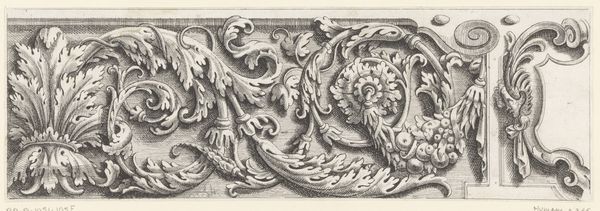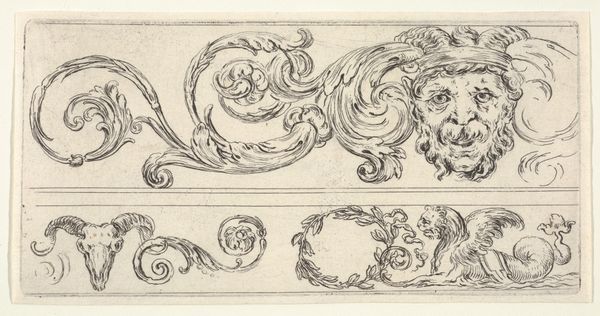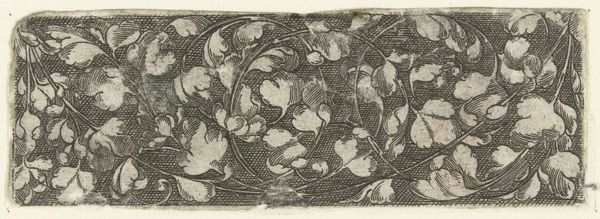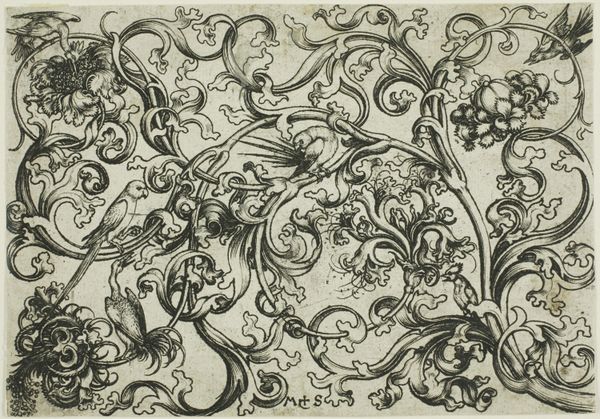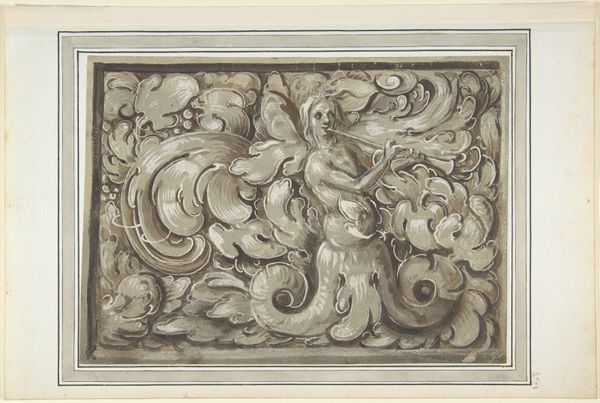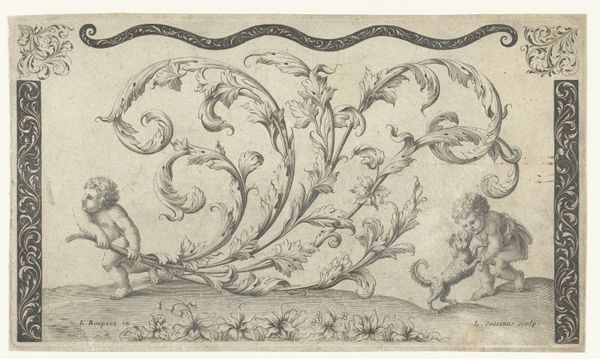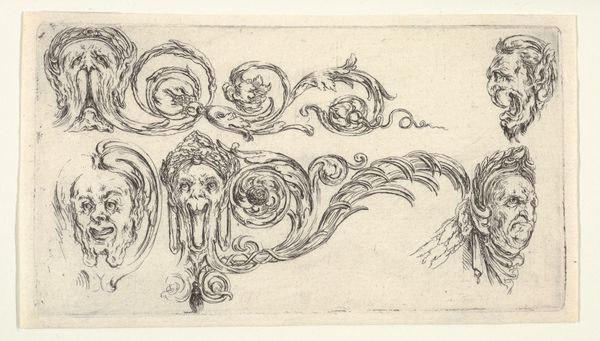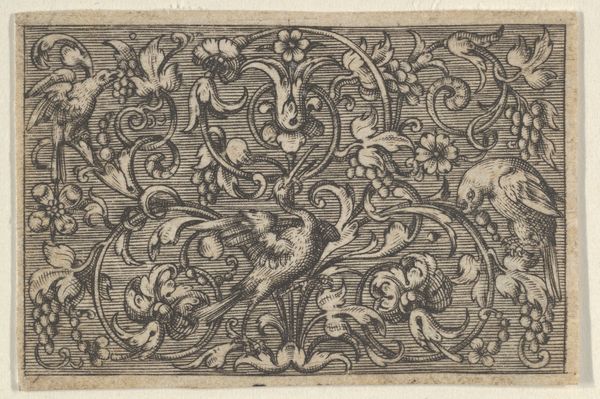
Frieze with Tendrils Growing from a Plant at Right and a Satyr Holding a Shield with the Artist's Monogram 1532
0:00
0:00
drawing, print, engraving
#
drawing
#
pen drawing
# print
#
pen sketch
#
figuration
#
11_renaissance
#
northern-renaissance
#
decorative-art
#
engraving
Dimensions: Sheet: 1 7/16 × 6 9/16 in. (3.7 × 16.7 cm)
Copyright: Public Domain
Heinrich Aldegrever created this small, intricate frieze using etching, a printmaking technique, sometime in the mid-16th century. The composition is dominated by a dense array of vegetal tendrils, leaves and fruit, all intertwined in a continuous, rhythmic pattern. Note how the artist used a combination of thin, delicate lines and darker, more pronounced shading to create depth and texture, giving the impression of lush growth. Look closely and you'll see how the composition is not merely decorative but incorporates figurative elements, such as the satyr on the left holding a shield bearing Aldegrever's monogram. This integration of classical motifs with naturalistic forms exemplifies the artistic concerns of the Renaissance, as does the concept of the grotesque. The frieze challenges fixed meanings by blurring the lines between the natural and the artificial, the human and the monstrous. The linear precision and attention to detail function not just aesthetically but also as part of a larger humanist discourse, reflecting the era’s fascination with ornamentation and the decorative arts.
Comments
No comments
Be the first to comment and join the conversation on the ultimate creative platform.
